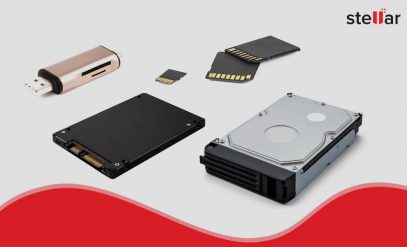Solid-State Drives (or SSDs) are typically based on NAND flash technology. A SSD drive provides more storage capacity and performance than a USB flash drive. It comprises a range of memory microchips that store data using complex RAID algorithms. This indeed facilitates better data access speed and leads to increased reliability of the drive. SSD drives have another key component called ‘controller’. It operates at the firmware level and is responsible for performing various functions, such as data striping, error correction, encryption, bad block matching, and wear leveling. Your SSD performance may vary depending on the functioning of the drive controller.
SSD drives do not contain moving parts. This makes them less prone to physical damages. As SSDs are now used as an alternative to hard disk drives (or HDDs), a lot of issues have been discovered that ultimately lead to physical data loss situations. Bad blocks are a common reason for SSD drive failure. Some of the flash drives develop bad blocks at the time of manufacturing or packaging itself. Others may have this problem at a later stage due to wear-out caused by improper reads or writes. If the number of bad blocks increase, the drive becomes more likely to fail.
SSD failures may also surface because of corrupt service area. A dedicated region of your SSD drive is used to store information about different functions of the drive. If anything causes damage to this region, then the drive would fail to function properly. There are numerous other reasons that relate to physical problems in SSDs. These are controller failure, logic board failure, bad memory chip, defective electronics, and electrical storm damage.
SSD Data Recovery from physically damaged SSDs requires real-time SSD experience. Each individual memory chip in your damaged SSD drive is removed and the data on these chips is copied to another storage device. As the SSD controller strips data across multiple memory chips using RAID redundancy techniques, it is essential to identify the striping scheme in order to get the data back into a usable form.
Professional data recovery service providers ensure safe recovery of your business-critical data from failed or troubled SSD drives. These companies have years of experience in dealing with all types of SSD failures, including both logical and physical. They employ highly-skilled personnel and have state-of-the-art infrastructure to diagnose all problems concerning SSDs and recover your precious data intact within the shortest turnaround time.







